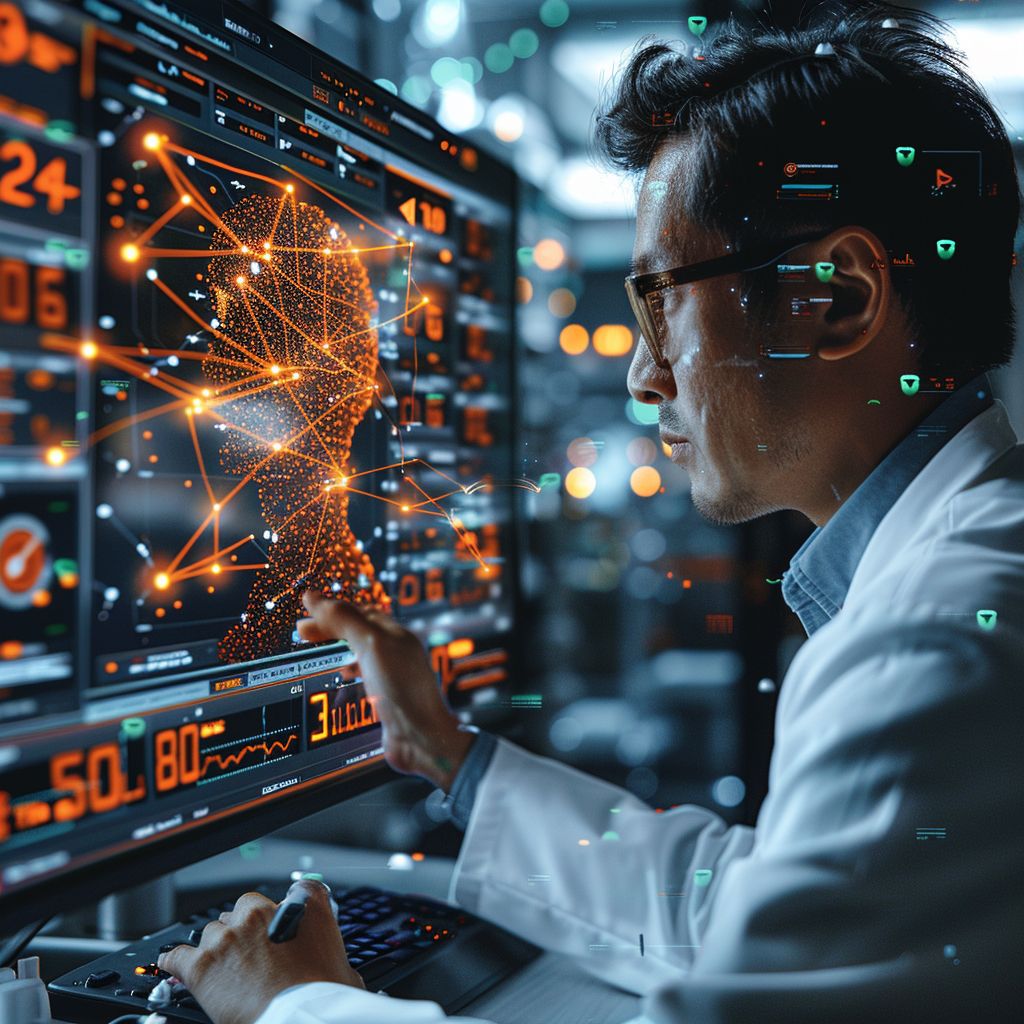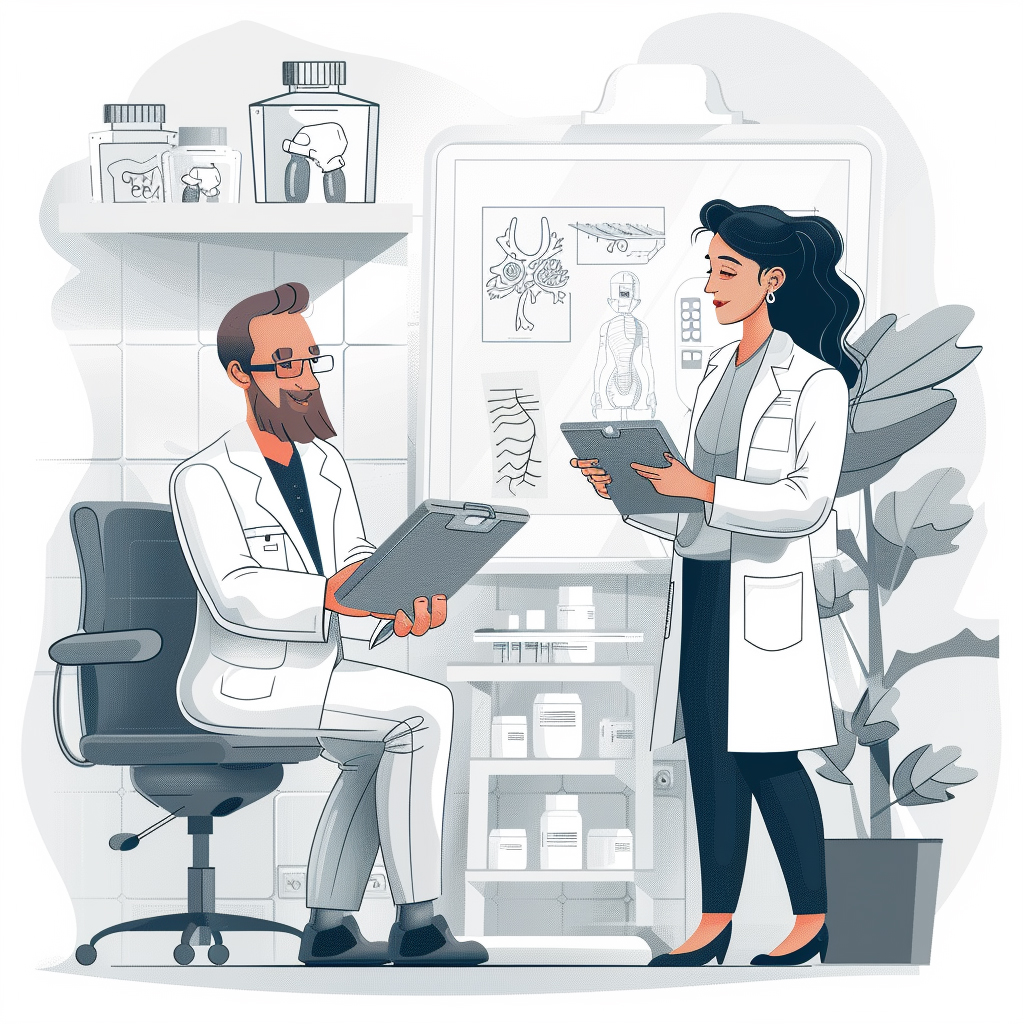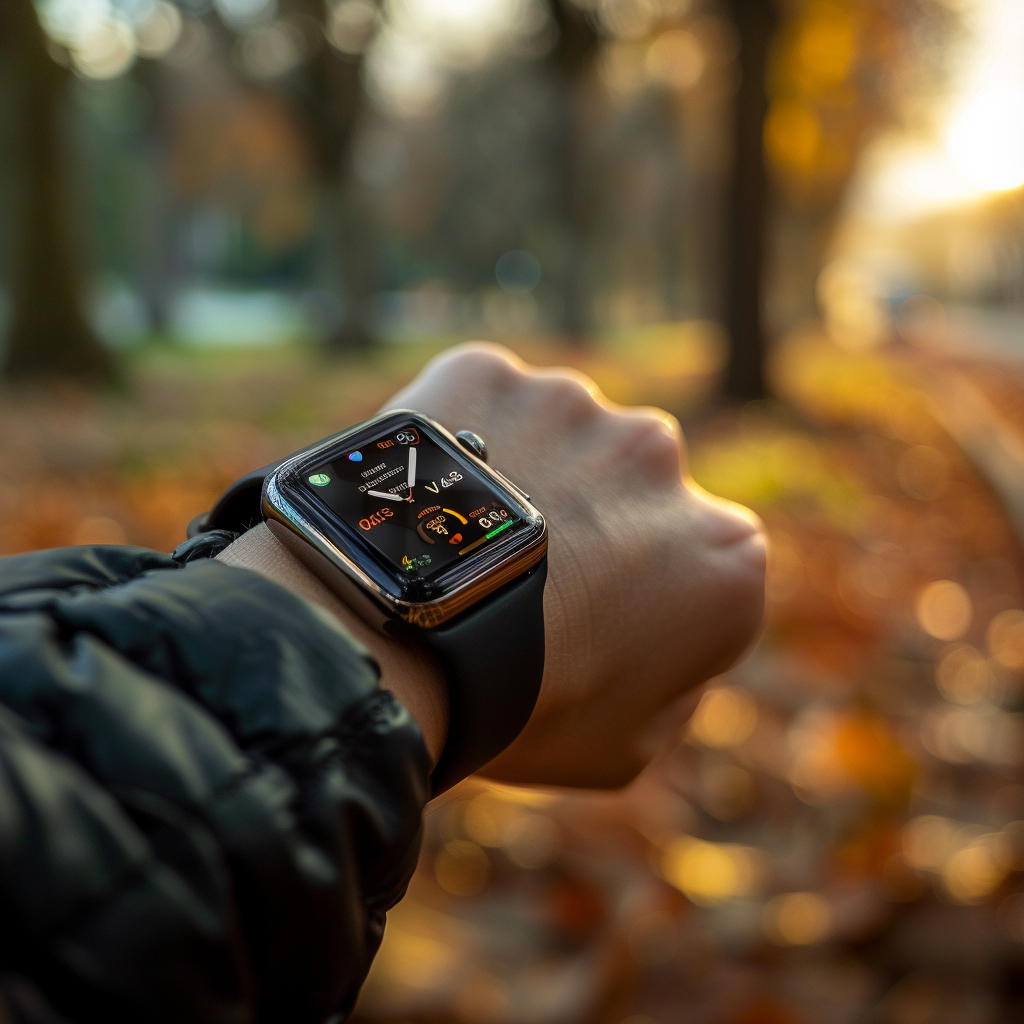1. Precision Diagnostics
AI is enhancing diagnostic accuracy by analyzing complex medical data—like radiology images and genetic profiles—to detect diseases earlier and more precisely than traditional methods. Algorithms can identify subtle patterns (for example, tiny tumors or genetic mutations) that physicians might miss, leading to earlier interventions tailored to a patient’s unique biology. In oncology, AI-based image analysis helps distinguish tumor subtypes, informing targeted treatment decisions from the outset.

In breast cancer screening, incorporating an AI system led to a 17.6% higher detection rate (6.7 vs 5.7 cancers per 1,000 screenings) while also cutting the false-positive rate from 2.39% to 1.63%, indicating more accurate diagnoses with fewer alarms. This illustrates how AI-driven precision diagnostics can improve both sensitivity and specificity in healthcare.
2. Treatment Customization
AI enables personalized treatment plans by sifting through a patient’s medical history, genetics, and lifestyle data to recommend therapies most likely to be effective. Instead of a one-size-fits-all approach, machine learning models help clinicians predict how an individual patient will respond to certain drugs or interventions, reducing trial-and-error in care. For example, AI tools in oncology analyze tumor genetics and patient factors to suggest tailored chemotherapy or immunotherapy regimens, often improving outcomes and minimizing side effects.

Researchers recently developed an AI model that predicts which cancer patients will benefit from immune checkpoint inhibitors with about 72–76% accuracy for 2.5-year survival, outperforming existing lab tests. This tool, published in Nature Medicine in 2025, was constructed using routine blood tests and clinical data and proved more accurate than the FDA-approved biomarker test for immunotherapy response. Such AI-driven insights help clinicians customize treatments to those most likely to benefit, exemplifying improved precision in therapy selection.
3. Drug Development
AI is accelerating drug discovery and development by efficiently analyzing vast chemical and biological data to identify promising drug candidates. Machine learning models can predict how different molecules will interact with targets (like proteins or genes), helping scientists pinpoint effective compounds faster than traditional lab screening. This speeds up the early-phase discovery of new medications and can also forecast toxicity or optimal dosing, reducing costly late-stage failures. Pharmaceutical companies now routinely use AI to scan databases for drug repurposing opportunities or to design novel molecules with desired properties.

A 2024 study in JAMA Network Open reviewed global pipelines and found 165 new drugs (164 investigational and 1 approved) where AI played a role in development, mostly in early-stage areas like molecule discovery. Notably, 76% of these AI applications were used for drug molecule discovery (e.g., screening or designing compounds), including one FDA-approved cell therapy that utilized an AI-based trial analysis method. These figures highlight that while AI-driven drug development is still emerging, it is already contributing to new treatments—particularly in oncology and neurology—and promises to streamline bringing personalized drugs to market.
4. Predictive Analytics
In healthcare, AI-powered predictive analytics crunch large datasets—from electronic health records, lab results, to population health stats—to forecast health risks and disease progression for individual patients. By recognizing patterns indicative of future problems (like early signs of diabetes complications or hospital readmission risk), AI enables clinicians and patients to take proactive measures. For instance, machine learning models can predict which hospitalized patients are likely to deteriorate or develop sepsis, prompting earlier interventions that save lives. Predictive analytics also helps identify at-risk individuals in the general population for screening programs or preventive therapies (such as predicting cardiovascular events years in advance based on risk factors and genetics).

A notable example is an AI early warning system for sepsis implemented at Johns Hopkins, which analyzes patients’ vital signs and records in real time. In a trial with over half a million patients, this AI system was credited with making patients 20% less likely to die of sepsis by catching the condition hours earlier than clinicians. The findings, reported in 2022 (with studies in Nature Medicine), demonstrate how predictive analytics can significantly improve outcomes; in this case, the AI alerted providers to sepsis well before it would normally be recognized, enabling timely treatment. This success story underscores the life-saving potential of AI-driven risk prediction in personalized medicine.
5. Wearable Health Monitoring
AI integration with wearable devices (like smartwatches, fitness bands, or continuous glucose monitors) is revolutionizing real-time health monitoring. These wearables continuously track personal health metrics—heart rate, blood pressure, glucose levels, sleep patterns, physical activity—and AI algorithms analyze the data to provide instant feedback or alerts. This means a person’s day-to-day health status can be monitored and managed in a personalized way: for example, an AI can detect an irregular heart rhythm on a smartwatch ECG and advise seeking medical attention before a stroke occurs, or adjust an insulin pump’s dosing based on trends in a diabetic patient’s glucose readings. The result is more responsive and individualized care, with early warning of issues (such as detecting subtle signs of atrial fibrillation or deterioration in lung function) and tailored lifestyle or medication recommendations delivered right to the user.

Wearable adoption has grown rapidly – a national survey in 2023 found that nearly one-third of U.S. adults (around 30%) use a wearable device to track their health or fitness. However, usage is not uniform across all patients: only about 26% of individuals at risk for heart disease and 18% of those with established heart disease reported using wearables, indicating a gap in adoption among high-risk groups. This suggests that while wearables with AI provide powerful personalized monitoring (and most users are even willing to share the data with their doctors), efforts are needed to broaden access so that those who could benefit the most—such as patients with chronic conditions—are not left behind.
6. Gene Therapy
AI is contributing to advances in gene therapy by helping scientists design safer and more effective genetic interventions. In gene editing techniques like CRISPR-Cas9, AI algorithms can predict and minimize off-target effects (unintended genetic changes) by analyzing vast genomic datasets, thereby improving precision when altering genes. AI can also optimize the design of guide RNAs or even engineer new variants of genome-editing enzymes that are tailored to specific DNA sequences. This means therapies that add, remove, or correct genes (for diseases like inherited disorders or cancers) can be customized to the patient’s genome with fewer side effects. Moreover, AI aids in identifying which genetic mutations in a patient are disease-driving “targets” that a gene therapy could address, streamlining the development of personalized genetic treatments.

A recent innovation showed that AI-designed gene-editing enzymes can dramatically reduce unwanted edits. Researchers used AI to create a miniaturized CRISPR-related nuclease, and some of these AI-generated gene editors had sixfold fewer off-target effects compared to the standard CRISPR-Cas9 system. In other words, AI-driven design improved the specificity of gene editing by 6× in laboratory tests. This enhanced precision is crucial for gene therapies, as it increases safety and efficacy, paving the way for treating genetic disorders at their source with minimal collateral damage.
7. Automation of Routine Tasks
AI is streamlining healthcare operations by automating routine administrative tasks, which range from appointment scheduling and insurance billing to medical record documentation. By handling these repetitive duties, AI systems (such as natural language processing tools that transcribe doctor–patient conversations into chart notes, or chatbots that schedule appointments and send reminders) free up healthcare professionals to focus more on direct patient care. Hospitals and clinics benefit through increased efficiency and fewer human errors in tasks like data entry or medication ordering. This automation also helps reduce clinician burnout associated with paperwork and administrative overload, which is a significant issue in medicine.

In the United States, administrative tasks account for roughly 25% of all healthcare expenditures, and analyses suggest that AI-driven automation could save about 25–30% of those admin costs by improving workflow efficiency. This implies a potential to save tens of billions of dollars annually. Additionally, over 90% of clinicians report that excessive administrative burden contributes to burnout, and automating even a portion of these duties can improve job satisfaction and patient throughput. In summary, AI’s ability to handle scheduling, billing, and record-keeping tasks quickly and accurately not only cuts costs but also allows healthcare providers to dedicate more time and attention to patient care, thereby improving the overall quality of the healthcare experience.
8. Virtual Health Assistants
AI-powered virtual health assistants – which can be smartphone apps, smart speakers, or chatbots – act as personalized health guides for patients in their daily lives. These assistants use natural language processing and machine learning to interact with users, answer health questions, provide medication reminders, suggest wellness tips, and even monitor symptoms. They tailor their advice based on an individual’s health data and goals; for instance, an AI nutrition assistant might suggest meal plans appropriate for a diabetic user, or a virtual coach might adjust an exercise routine based on the user’s recent activity levels and injuries. Available 24/7, virtual health assistants extend care beyond the clinic by engaging patients to manage chronic conditions (like reminding an asthma patient to use inhalers during high-risk days) and by giving immediate feedback or triage advice (for example, a symptom checker that advises whether to seek urgent care).

These tools are quickly gaining popularity among consumers: surveys show that over 60% of digital health users have relied on an AI-based medical assistant for health insights or symptom checking. Such usage indicates that a majority of people who use digital health apps trust AI helpers to guide them on issues like interpreting symptoms or tracking fitness. One common example is symptom-checker apps that, when given a user’s complaints, can provide probable causes or advise on next steps; many patients find this useful before deciding to visit a doctor. As the technology and user trust grow, virtual health assistants are expected to play an even larger role in personalized patient education, medication adherence (e.g., “It’s time to take your 8 AM dose”), and chronic disease management—essentially serving as a constant health companion backed by AI knowledge.
9. Healthcare Bots for Patient Engagement
AI-driven healthcare chatbots are being deployed to improve patient engagement by offering conversational support and personalized information on demand. These chatbots can engage with patients through text or voice interfaces to answer questions about symptoms, provide guidance on managing chronic conditions, or give instructions before and after medical procedures. By accessing a patient’s health records or history (with permission), a chatbot can tailor its responses— for example, a bot could check in with a diabetes patient daily to log blood sugar readings and then suggest diet adjustments or encourage medication compliance based on those readings. Patient engagement bots also help navigate the healthcare system: they can remind patients about appointments, explain prescribed medications and their side effects, or even perform mental health check-ins and coaching. The convenience and immediacy of a responsive bot available at any hour encourages patients to stay involved in their care plan.

The healthcare industry has quickly embraced chatbots for these purposes. By 2022, approximately 60% of healthcare organizations reported using chatbot technology to assist in patient communication, a sharp increase from prior years. These bots are capable of handling up to 80% of routine patient inquiries (e.g., FAQs about clinic hours, refill requests, or symptom triage), which frees up staff time for more complex issues. Moreover, patient surveys (Accenture, 2021) have shown that about one-third of patients are interested in using chatbots for simple tasks like scheduling and refills. When deployed thoughtfully, healthcare bots enhance engagement by providing patients timely and accurate answers and by fostering continuous communication between visits, all of which can lead to better adherence to treatment plans and higher patient satisfaction.
10. Advanced Prosthetics
AI is powering a new generation of advanced prosthetic devices that offer far more functionality and personalization than traditional prosthetics. Using AI and machine learning, these bionic limbs (arms, hands, legs, or even neuroprosthetic implants) can interpret signals from a user’s nerves or muscles to intuitively control movement. This allows prosthetics to move in more natural coordination with the person’s intentions—for instance, an AI-driven prosthetic hand can learn to grasp objects with appropriate force by recognizing the user’s EMG (muscle signal) patterns, and even improve its performance over time through adaptive algorithms. Additionally, AI helps customize prosthetics to an individual’s gait or usage patterns: robotic legs can adjust their joint stiffness or angle in real time on varied terrain, providing stability and a smoother walking experience. Some advanced systems integrate sensory feedback, where AI converts sensor data (touch or pressure from the prosthetic) into signals the user can perceive, restoring a sense of touch.

AI is powering a new generation of advanced prosthetic devices that offer far more functionality and personalization than traditional prosthetics. Using AI and machine learning, these bionic limbs (arms, hands, legs, or even neuroprosthetic implants) can interpret signals from a user’s nerves or muscles to intuitively control movement. This allows prosthetics to move in more natural coordination with the person’s intentions—for instance, an AI-driven prosthetic hand can learn to grasp objects with appropriate force by recognizing the user’s EMG (muscle signal) patterns, and even improve its performance over time through adaptive algorithms. Additionally, AI helps customize prosthetics to an individual’s gait or usage patterns: robotic legs can adjust their joint stiffness or angle in real time on varied terrain, providing stability and a smoother walking experience. Some advanced systems integrate sensory feedback, where AI converts sensor data (touch or pressure from the prosthetic) into signals the user can perceive, restoring a sense of touch. Fact: The capabilities of AI-powered prosthetics are highlighted by recent clinical demonstrations. In 2022, researchers enabled a man with paralysis to control two robotic prosthetic arms with his thoughts to feed himself, using a brain-computer interface aided by AI. In trials, he successfully performed this bimanual task in 17 out of 20 attempts (~85% success rate), a remarkable feat of coordination that required the AI to interpret neural signals and partly automate the precise movements. This example showcases how AI allows prosthetics to not only move in response to user intent but to do so with a high degree of autonomy and accuracy, accomplishing complex activities. More commonly, AI-driven leg prosthetics have been shown to improve balance and reduce falls by dynamically adapting to the user’s posture. Overall, by customizing prosthetic control to the individual and embedding intelligence that mimics natural limb behavior, AI is greatly enhancing mobility and quality of life for people with limb loss or paralysis.